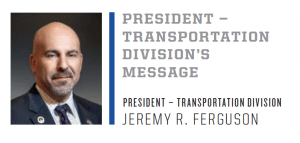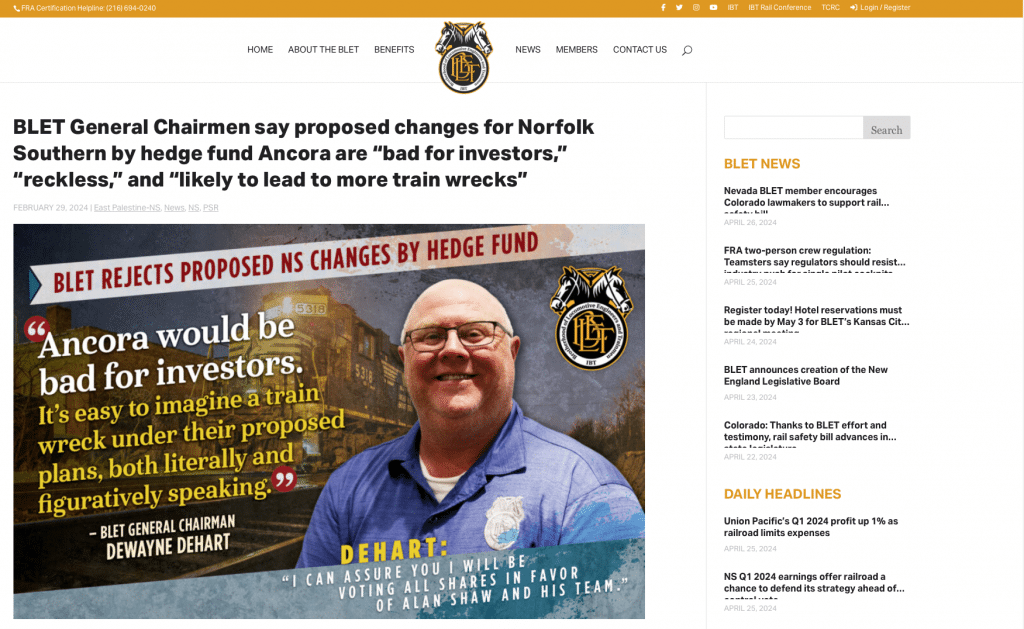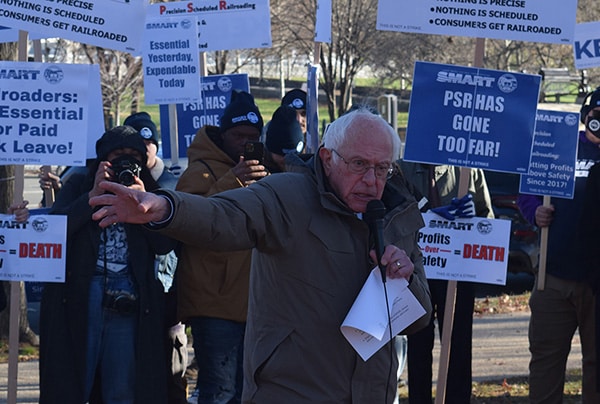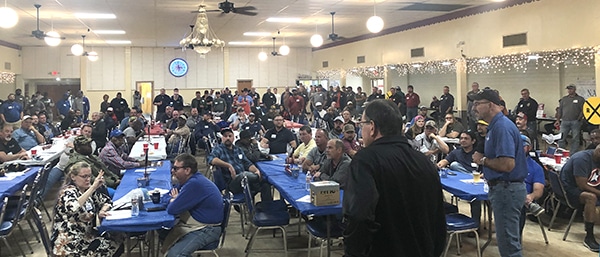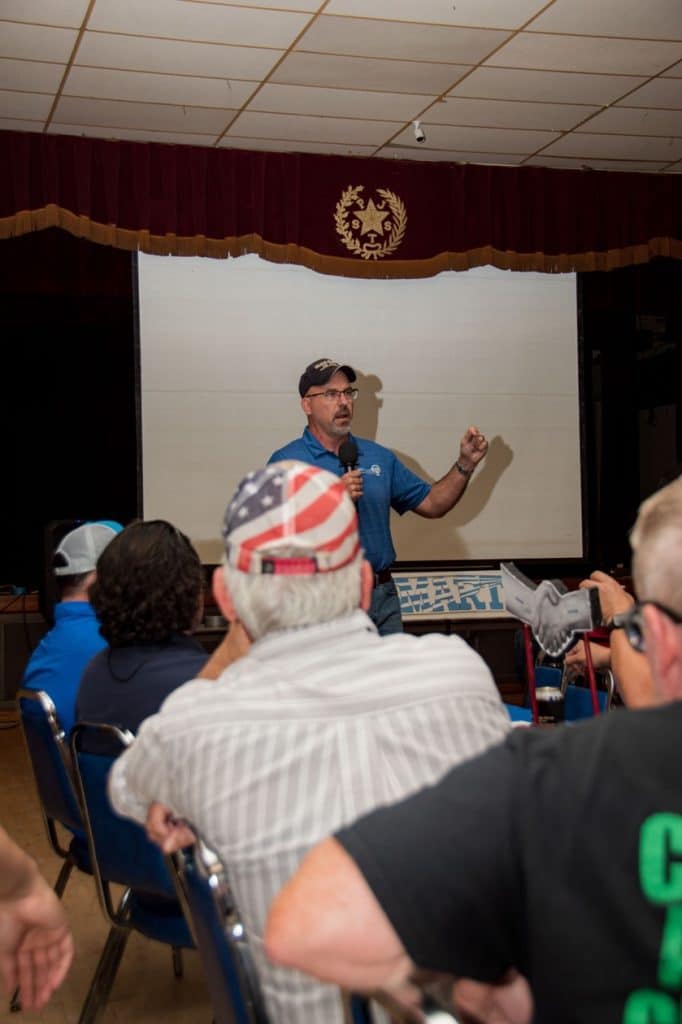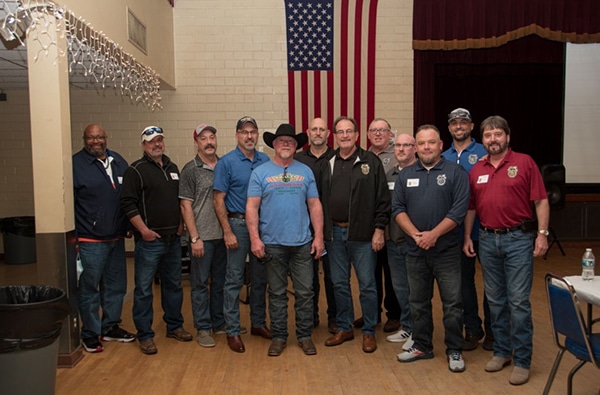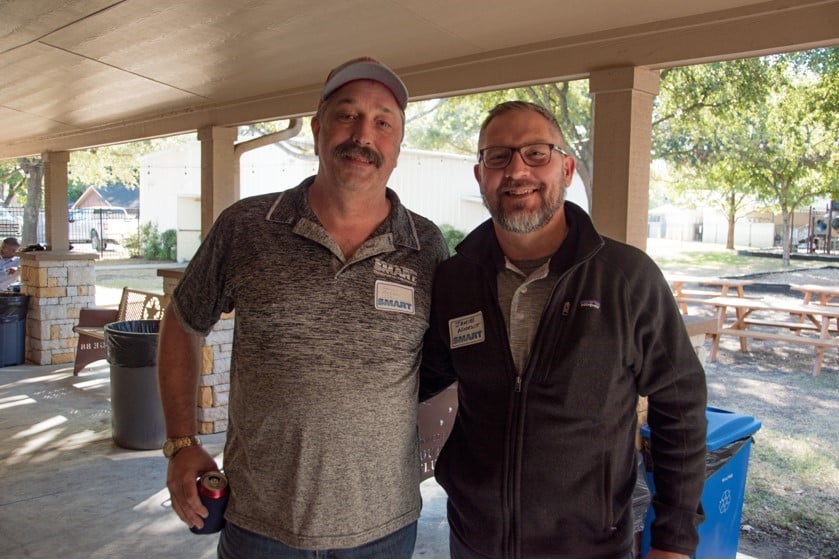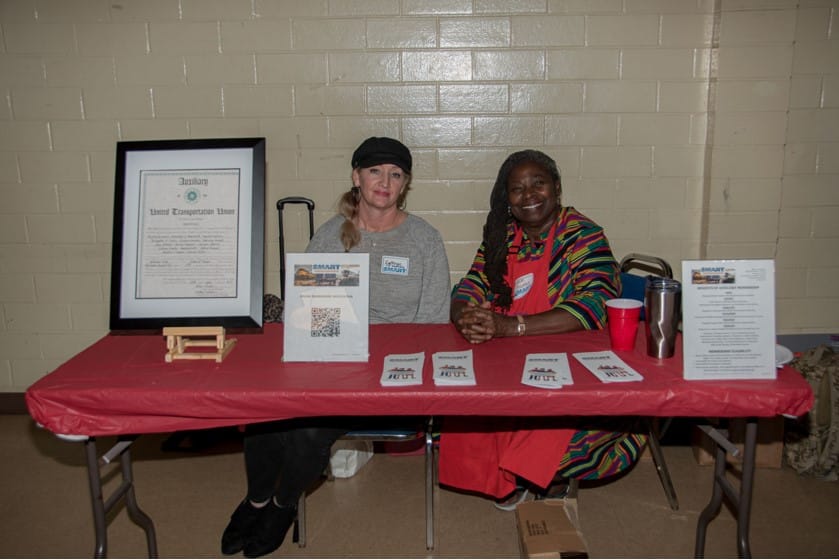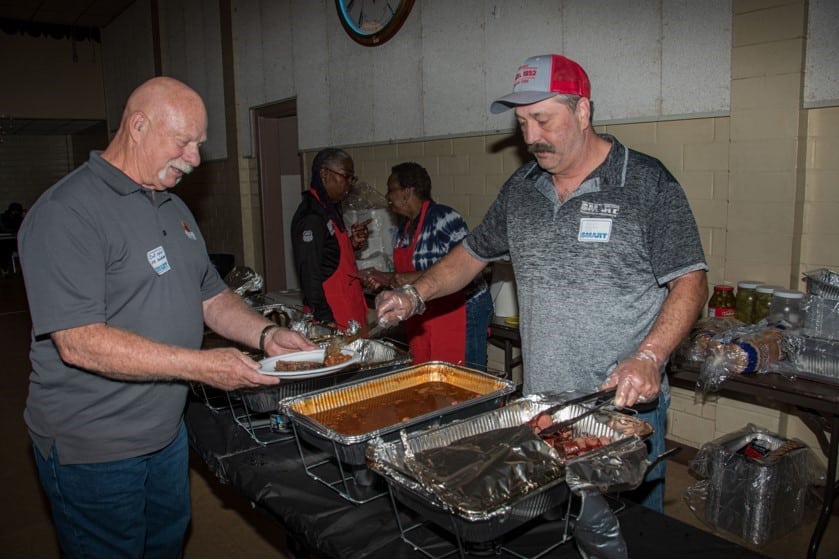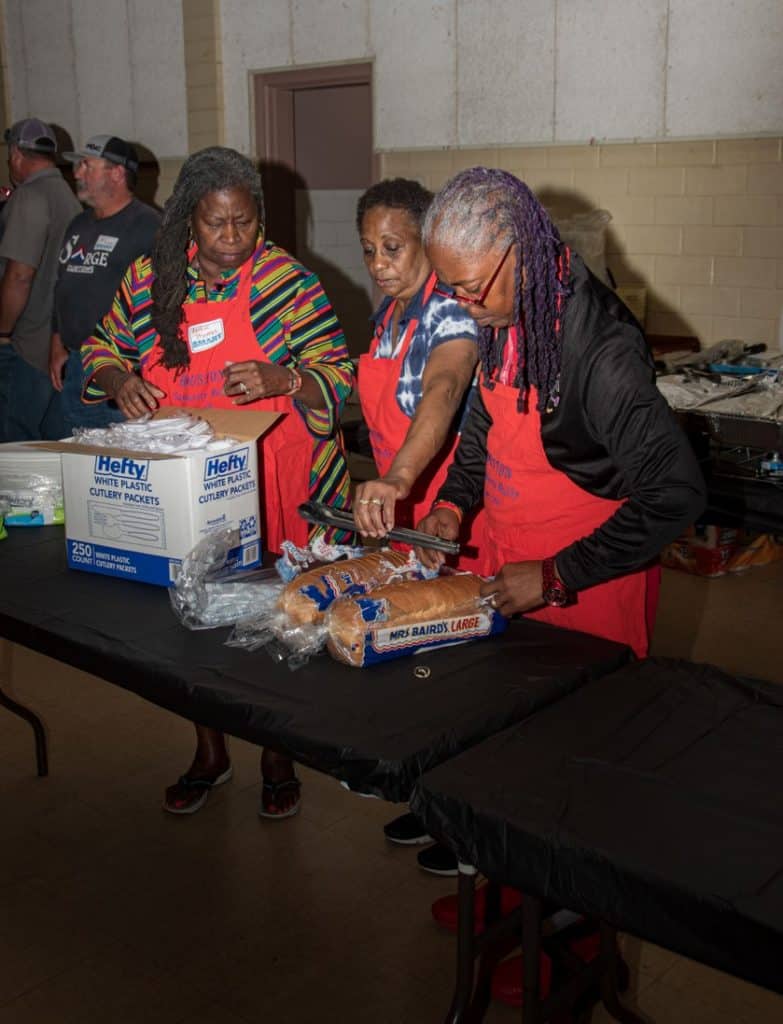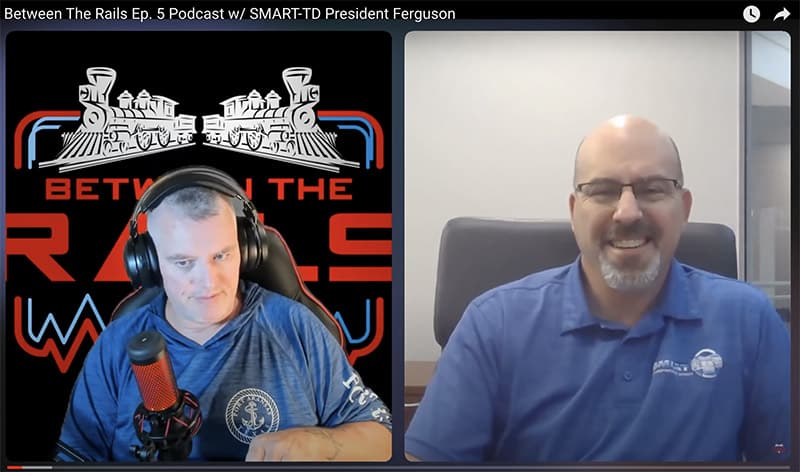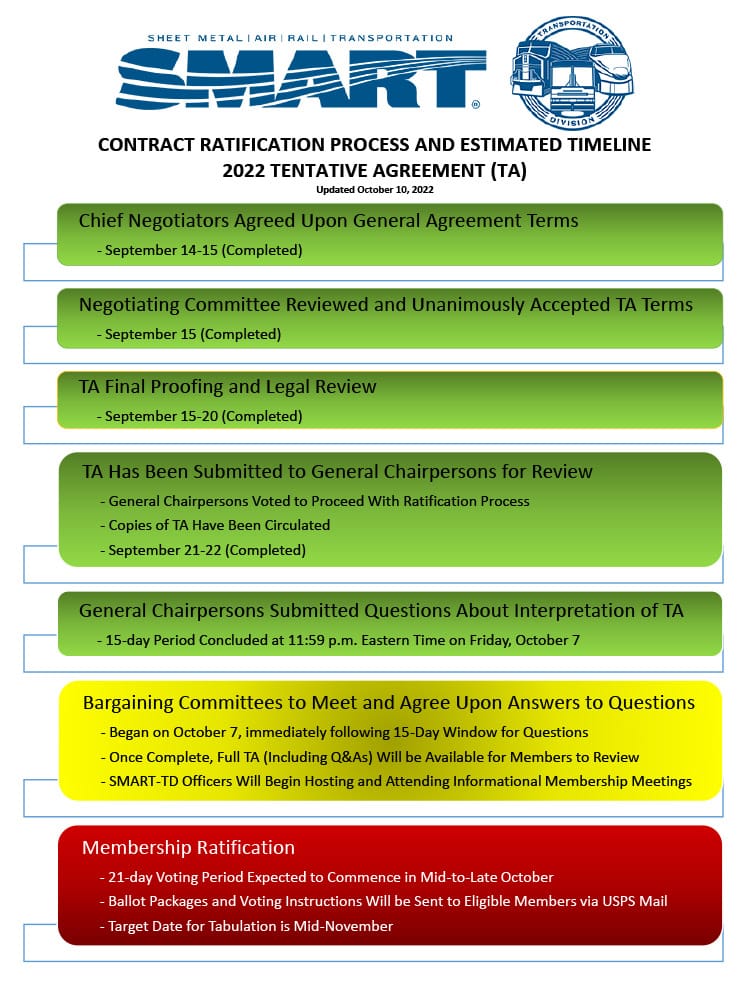CLEVELAND, Ohio – On Sept. 23, 2024, the International Association of Sheet Metal, Air, Rail, and Transportation Workers, Transportation Division (SMART-TD), the American Train Dispatchers Association (ATDA) and Brotherhood of Locomotive Engineers and Trainmen (BLET) jointly endorsed Sherrod Brown for U.S. Senate. The endorsement follows a meeting at ATDA’s Cleveland, Ohio, headquarters between Senator Brown and the presidents of the three Ohio-based national rail unions.
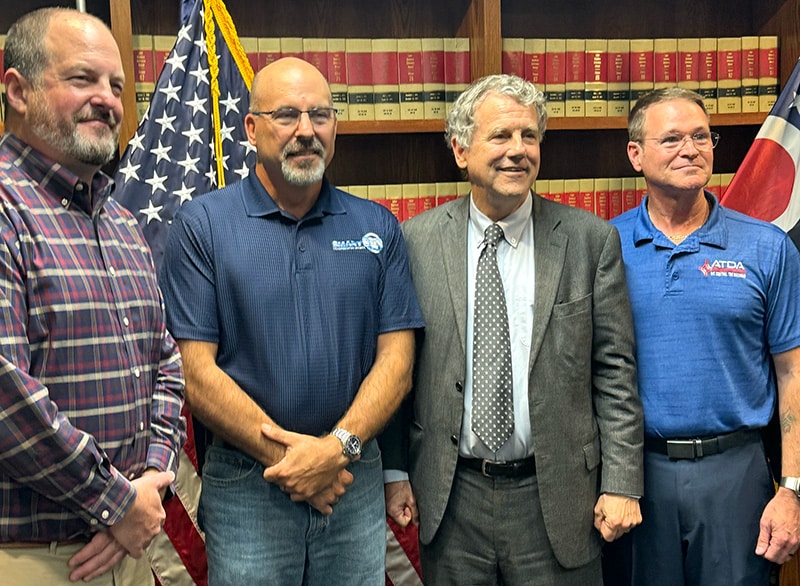
The following is the joint statement of endorsement from SMART-TD President Jeremy Ferguson, ATDA President Ed Dowell and BLET National President Eddie Hall:
“In the current political landscape, where workers’ rights and safety regulations often take a back seat to corporate interests, few champions have consistently stood by labor unions and fought for worker protections like Senator Sherrod Brown. His unwavering commitment to rail safety and the dignity of unionized labor stands in stark contrast to his opponent, Bernie Moreno, whose policies and public statements reveal a disregard for the needs of working-class Americans. As the election approaches, Ohioans have a clear choice: a candidate who has tirelessly advocated for labor rights and rail safety, or one whose anti-union positions threaten the very livelihood of Ohio’s workers.
“For decades, Senator Brown has been a tireless advocate for working families, particularly unionized workers in industries like rail, manufacturing, and construction. Throughout his career, he has supported legislation that strengthens collective bargaining rights, ensures fair wages, and protects the benefits that union workers have fought for over generations. His leadership during the 2022 national rail labor dispute was a prime example of his dedication to standing up for workers when they need it most. Brown publicly supported rail workers’ demands for improved pay and benefits, including paid sick leave, and he worked to prevent the disruption of services while maintaining solidarity with the unions.
“In contrast, Bernie Moreno has made it clear that he does not prioritize union workers. A businessman with no background in public service, Moreno has aligned himself with anti-union, pro-corporate interests. He has spoken against labor unions, suggesting that they hinder economic growth, despite overwhelming evidence that unions play a crucial role in improving workers’ wages and working conditions. Unlike Brown, who has a proven track record of fighting for Ohio’s working-class families, Moreno’s business-first approach threatens to erode the hard-earned protections that union workers rely on.
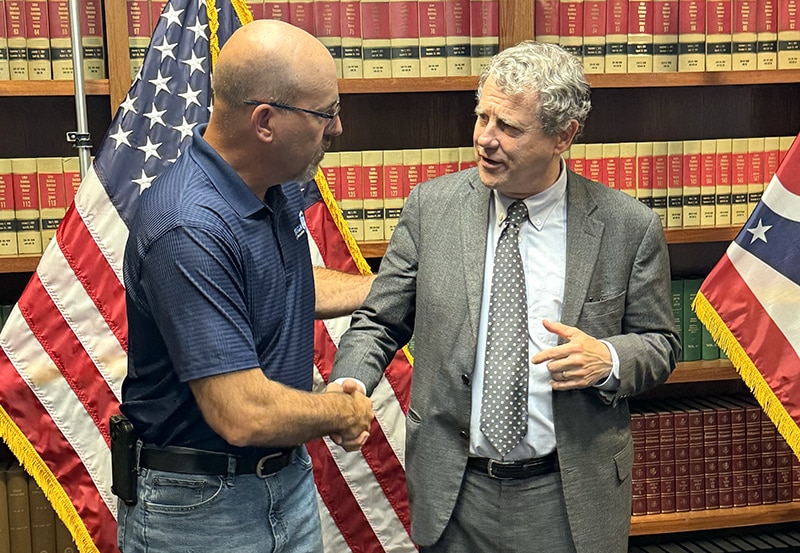
“In February 2023, the Norfolk Southern train derailment in East Palestine, Ohio, shocked the nation and underscored the urgent need for stronger rail safety regulations. Sherrod Brown responded with swift action, co-sponsoring the Railway Safety Act and advocating for reforms that would prevent such disasters in the future. He has pushed for stricter oversight of rail companies, more frequent inspections, and improved safety protocols for hazardous materials transport. Brown’s leadership on rail safety reflects his understanding of the vital role railroads play in both the economy and public safety, as well as his commitment to protecting the communities and workers who depend on safe, reliable rail systems.
“Bernie Moreno, on the other hand, has shown little interest in addressing these pressing safety concerns. While Brown was on the ground in East Palestine, meeting with affected residents and demanding accountability from Norfolk Southern, Moreno has remained largely silent on the issue of rail safety. His lack of concern for worker safety is consistent with his broader opposition to regulations that protect employees. Moreno’s pro-business platform prioritizes deregulation, even in industries like rail where safety should be paramount. Such an approach would only embolden corporations to cut corners on safety, endangering both workers and communities.
Moreno’s campaign is built on his success in the business world, but that success has come at the expense of workers’ rights. He has openly opposed labor unions, dismissing them as unnecessary in a modern economy. His vision for Ohio is one where corporate interests dominate, and workers are left with fewer protections, lower wages, and diminished bargaining power. Moreno’s stance on unions isn’t just a political position — it’s a direct attack on the livelihoods of Ohio’s working families. If elected, Moreno would likely support policies that weaken collective bargaining, reduce workers’ benefits, and undermine the very fabric of union solidarity.
“In contrast, Sherrod Brown understands that unions are the backbone of a strong middle class. He knows that when workers have the power to negotiate fair wages and benefits, the entire economy benefits. Brown’s commitment to workers extends beyond speeches and photo opportunities; it is embedded in his legislative record and his personal values. He has consistently fought to protect the rights of union workers, whether by advocating for pro-labor legislation in Washington or by standing shoulder-to-shoulder with union members on picket lines.
“This election presents a stark contrast between two candidates with vastly different visions for Ohio’s future. Sherrod Brown represents a future where workers’ rights are respected, where rail safety is prioritized, and where unions continue to play a vital role in lifting up the middle class. Bernie Moreno, on the other hand, represents a future where corporations have free rein to exploit workers, where safety regulations are rolled back, and where the voices of working families are drowned out by corporate interests.
“For Ohio’s rail workers and union members across the state, the choice is clear. Sherrod Brown has spent his career fighting for them — fighting for fair wages, safe working conditions, and the right to organize. Bernie Moreno, by contrast, poses a threat to the very existence of unions and the protections they provide.
“As Ohio faces critical challenges in rail safety and labor rights, the stakes could not be higher. Ohioans need a senator who will stand up for workers, not corporate profits. Sherrod Brown is that senator, and his proven track record of supporting unions and promoting safety makes him the right choice for Ohio’s working families.”
In addition to the statement of endorsement, the three union Presidents made the following additional remarks:
SMART-TD President Jeremy Ferguson praised Senator Brown’s track record, by adding “Sherrod Brown has been a long-time friend of rail labor, and all of labor for that matter. He has had our backs countless times on so many important issues, including the current Rail Safety Bill. Senator Brown had the safety of the entire state of Ohio’s back and this country’s when he co-sponsored the most important safety legislation in my lifetime. It’s our turn to have his back and support Senator Brown for his re-election. No one fights harder for us than he does and now we’re going to show him how hard rail labor will fight for him from now until November 5th! Thank you, Senator Brown for all you have done to keep us safe. The SMART Transportation Division is so very proud to be supporting you and to be a part of your campaign efforts here today.”
BLET National President Eddie Hall stated, “Anyone who lives within the sound of a train whistle should be concerned about rail safety. This is especially true in Ohio, where we’ve seen major derailments in places like East Palestine, Springfield and elsewhere.
“The railroads talk a good game about safety while running longer trains with fewer workers and cutting corners on maintenance. No one — and I mean no one in government — has done more to protect railroad workers and the communities served by the railroads from dangerous practices than Sherrod Brown. He stands up for workers and working families and takes strong stands to protect the people of Ohio and that’s why the members of the Brotherhood of Locomotive Engineers & Trainmen are standing by him.”
Finally, the event’s host, ATDA President Ed Dowell, applauded both Senator Brown and the other union presidents for coming together in a public show of solidarity: “Having Presidents Ferguson and Hall join me for this meeting demonstrates the importance of Sen. Brown’s re-election. The stakes have never been higher. Our neighbors, families, and friends should not fear that another rail tragedy will occur in Ohio. Unlike his rival, Sherrod Brown will not abandon rail safety after the election concludes. Sen. Brown will always fight for us, Ohioans. He’s not beholden to the railroad behemoths, which his rival will cave into. No senator advocates for rail safety more than Sherrod Brown and that’s why ATDA stands with him.”
For more information, please email sikes@atda.org.
The SMART Transportation Division is the largest rail union in the United States, comprised of approximately 125,000 active and retired members who work in a variety of different crafts in the transportation industry. These crafts include employees on every Class I railroad, Amtrak, many shortline railroads, bus and mass transit employees and airport personnel. More information is available at www.smart-union.org.
